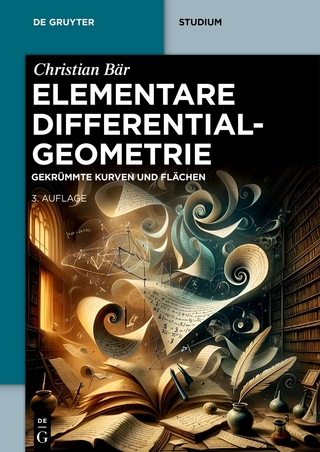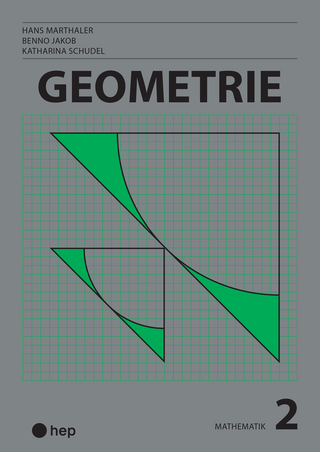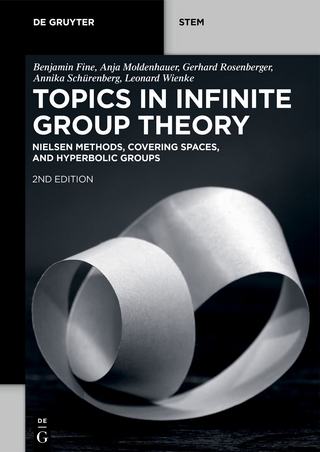
Algebraic Surfaces
Springer Berlin (Verlag)
978-3-540-58658-6 (ISBN)
Biography of Oscar Zariski Oscar Zariski (24.4.1899-4.7.1986) was born in Kobryn, Poland, and studied at the universities of Kiev and Rome. He held positions at Rome University, John Hopkins University, the University of Illinois and from 1947 at Harvard University. Zariski's main fields of activity were in algebraic geometry, algebra, algebraic function theory and topology. His most influential results bear on algebraic surfaces, the resolution of singularities and the foundations of algebraic geometry over arbitrary fields.
I. Theory and Reduction of Singularities.- 1. Algebraic varieties and birational transformations.- 2. Singularities of plane algebraic curves.- 3. Singularities of space algebraic curves.- 4. Topological classification of singularities.- 5. Singularities of algebraic surfaces.- 6. The reduction of singularities of an algebraic surface.- II. Linear Systems of Curves.- 1. Definitions and general properties.- 2. On the conditions imposed by infinitely near base points.- 3. Complete linear systems.- 4. Addition and subtraction of linear systems.- 5. The virtual characters of an arbitrary linear system.- 6. Exceptional curves.- 7. Invariance of the virtual characters.- 8. Virtual characteristic series. Virtual curves.- Appendix to Chapter II by Joseph Lipman.- III. Adjoint Systems and the Theory of Invariants.- 1. Complete linear systems of plane curves.- 2. Complete linear systems of surfaces in S3.- 3. Subadjoint surfaces.- 4. Subadjoint systems of a given linear system.- 5. The distributive property of subadjunction.- 6. Adjoint systems.- 7. The residue theorem in its projective form.- 8. The canonical system.- 9. The pluricanonical systems.- Appendix to Chapter III by David Mumford.- IV. The Arithmetic Genus and the Generalized Theorem of Riemann-Roch.- 1. The arithmetic genus Pa.- 2. The theorem of Riemann-Roch on algebraic surfaces.- 3. The deficiency of the characteristic series of a complete linear system.- 4. The elimination of exceptional curves and the characterization of ruled surfaces.- Appendix to Chapter IV by David Mumford.- V. Continuous Non-linear Systems.- 1. Definitions and general properties.- 2. Complete continuous systems and algebraic equivalence.- 3. The completeness of the characteristic series of a complete continuous system.- 4. The variety of Picard.- 5. Equivalence criteria.- 6. The theory of the base and the number ? of Picard.- 7. The division group and the invariant ? of Severi.- 8. On the moduli of algebraic surfaces.- Appendix to Chapter V by David Mumford.- VI. Topological Properties of Algebraic Surfaces.- 1. Terminology and notations.- 2. An algebraic surface as a manifold M4.- 3. Algebraic cycles on F and their intersections.- 4. The representation of F upon a multiple plane.- 5. The deformation of a variable plane section of F.- 6. The vanishing cycles ?i, and the invariant cycles.- 7. The fundamental homologies for the 1-cycles on F.- 8. The reduction of F to a cell.- 9. The three-dimensional cycles.- 10. The two-dimensional cycles.- 11. The group of torsion.- 12. Homologies between algebraic cycles and algebraic equivalence. The invariant ?0.- 13. The topological theory of algebraic correspondences.- Appendix to Chapter VI by David Mumford.- VII. Simple and Double Integrals on an Algebraic Surface.- 1. Classification of integrals.- 2. Simple integrals of the second kind.- 3. On the number of independent simple integrals of the first and of the second kind attached to a surface of irregularity q. The fundamental theorem.- 4. The normal functions of Poincaré.- 5. The existence theorem of Lefschetz-Poincaré.- 6. Reducible integrals. Theorem of Poincaré.- 7. Miscellaneous applications of the existence theorem.- 8. Double integrals of the first kind. Theorem of Hodge.- 9. Residues of double integrals and the reduction of the double integrals of the second kind.- 10. Normal double integrals and the determination of the number of independent double integrals of the second kind.- Appendix to Chapter VII by David Mumford.- ChapterVIII. Branch Curves of Multiple Planes and Continuous Systems of PlaneAlgebraic Curves.- 1. The problem of existence of algebraic functions of two variables.- 2. Properties of the fundamental group G.- 3. The irregularity of cyclic multiple planes.- 4. Complete continuous systems of plane curves with d nodes.- 5. Continuous systems of plane algebraic curves with nodes and cusps.- Appendix 1 to Chapter VIII by Shreeram Shankar Abhyankar.- Appendix 2 to Chapter VIII by David Mumford.- Appendix A. Series of Equivalence.- 1. Equivalence between sets of points.- 2. Series of equivalence.- 3. Invariant series of equivalence.- 4. Topological and transcendental properties of series of equivalence.- 5. (Added in 2nd edition, by D. Mumford).- Appendix B. Correspondences between Algebraic Varieties.- 1. The fixed point formula of Lefschetz.- 2. The transcendental equations and the rank of a correspondence.- 3. The case of two coincident varieties. Correspondences with valence.- 4. The principle of correspondence of Zeuthen-Severi.- Supplementary Bibliography for Second Edition.
"The author's book 'Algebraic surfaces' saw its first edition in 1935. By that time, the Italian school of algebraic geometers had brought the theory of algebraic surfaces, mainly with regard to its purely geometric aspects, to a remarkable stage of maturity. On the other hand, the topological and complex-analytic aspects had become a substantial part of the theory, essentially due to S. Lefschetz's contributions in the 1920s. However, for both directions, a solid base was still missing, and the new framework of abstract algebra was just at its beginning of being applied to algebraic geometry. The author's book was then a milestone in the history of the theory of algebraic surfaces, and even so in algebraic geometry as a whole. Namely, the author brought together the techniques of topology, analysis and classical algebraic geometry, in a coherent and rigorous way, thereby providing a solid foundation as well as a complete account of algebraic surface theory.
Now as before, the original text of the book is an excellent source for an interested reader to study the methods of classical algebraic geometry, and to find the great old results, stated here without requiring the knowledge of the modern, abstract (sheaf- and cohomology-theoretic) machinery of contemporary algebraic geometry. -- The second edition of the book under review appeared in 1971 enriched by updating appendices -- one for each chapter --, which were written by S.S. Abhyankar, J. Lipman, and D. Mumford. These ten appendices gave outlines of the developments of algebraic surface theory during the period from 1935 to 1970, connecting -- in this way -- Zariski's original classic text to the methods and results of abstract modern algebraic geometry.
Today, there is a vast literature on algebraic surface theory from the modern point of view, ... , but the classic text under review is still highly recommendable for reading, a linking piece between classical and modern algebraic geometry, and a timelessly beautiful pearl in the cultural heritage of mathematics as a whole. The present edition is an unchanged reprint of the second edition from 1971."
Zentralblatt MATH, 845 `
| Erscheint lt. Verlag | 15.2.1995 |
|---|---|
| Reihe/Serie | Classics in Mathematics |
| Mitarbeit |
Assistent: S.S. Abhyankar, Jeffrey Lipman, D. Mumford |
| Zusatzinfo | XI, 273 p. |
| Verlagsort | Berlin |
| Sprache | englisch |
| Maße | 155 x 235 mm |
| Gewicht | 464 g |
| Themenwelt | Mathematik / Informatik ► Mathematik ► Geometrie / Topologie |
| Schlagworte | Algebra • Algebraic Curve • Algebraic Geometry • algebraic surface • Algebraic Varieties • Algebraische Geometrie • Dimension • Excel • Geometry • manifold • Mathematics • Review • Torsion • Transformation |
| ISBN-10 | 3-540-58658-X / 354058658X |
| ISBN-13 | 978-3-540-58658-6 / 9783540586586 |
| Zustand | Neuware |
| Haben Sie eine Frage zum Produkt? |
aus dem Bereich


